Hijab Articles
What Does the Quran Actually Say About Hijab?
What does the Quran actually say about hijab?
Hijab is one of Islam’s most controversial topics. From claiming it’s a form of oppression to arguing that it wasn’t mentioned in the Quran, the hijab was subject to a lot of talk throughout the years.
The fact that it’s only obligatory for women raises a lot of questions, such as its importance in Islam and the real purpose behind it. And while Muslims are actually encouraged to wonder about their religion and explore it, such questions fuel some movements repelling hijab under the false pretense that if you’re wondering about the purpose of it, you’re not fully convinced about it.
So, here, we’re willing to dive deeper into the topic, tell you what the Quran said about hijab, and clarify the specifics of it to put these thoughts to rest.
Which Surah in Quran Talks About Hijab?
The hijab is mentioned specifically only twice in the Quran, once in Surah 24, An-Nur (The Light), and once in Surah 33, Al-Ahzab.
An-Nur translates to The Light, and the Surah takes its name from verse 35, which describes Allah as the light of heavens and earth.
Meanwhile, Al-Ahzab is a name for the Confederates who fought the Muslims during the siege of Madinah.
Other than that, there have been mentions of covering up in general, but the hijab in its head-covering form was only mentioned in these two Surahs.
What Does the Quran Actually Say About Hijab?
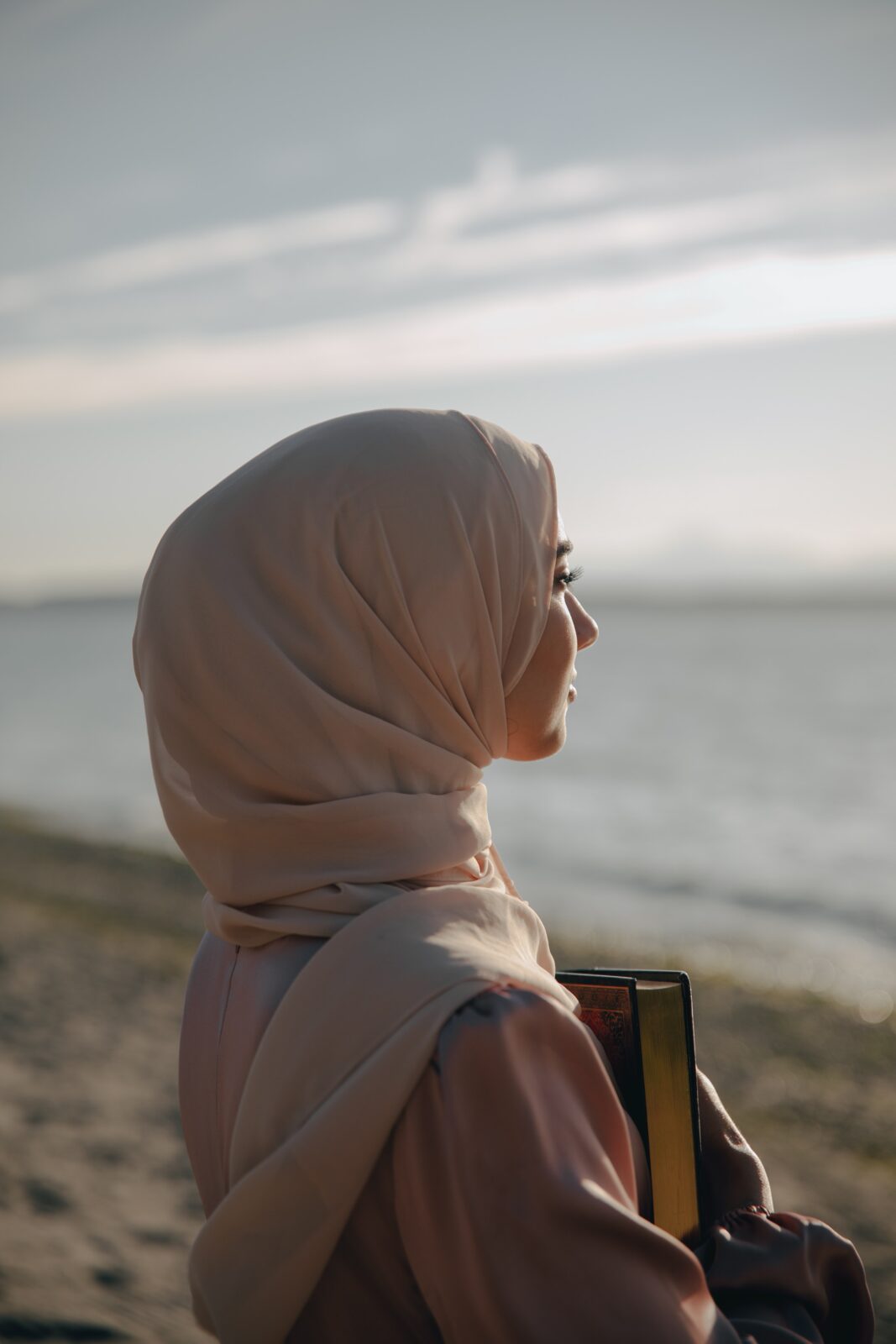
The Quran was specific about hijab in mainly two instances. The first instance is verse 31 of Surah An-Nur, which says the following:
“Tell the believing men to lower their gaze and be modest. That is purer for them. Lo! Allah is Aware of what they do. And tell the believing women to lower their gaze and be modest, and to display of their adornment only that which is apparent, and to draw their veils over their bosoms, and not to reveal their adornment save to their own husbands or fathers or husbands’ fathers, or their sons or their husbands’ sons, or their brothers or their brothers’ sons or sisters’ sons, or their women, or their slaves, or male attendants who lack vigor, or children who know naught of women’s nakedness. And let them not stamp their feet to reveal what they hide of their adornment. And turn unto Allah together, O believers, so that ye may succeed.”
The second instance was in Surah Al-Ahzab, and it was directed to the Prophet’s wives and all women of Islam:
“O Prophet! Tell thy wives and thy daughters and the women of the believers to draw their cloaks close round them [when they go abroad]. That will be better, that so they may be recognized and not annoyed. Allah is ever Forgiving, Merciful.”
Aside from these two instances, there were a few instances of mentioning covering up. For example, in Surah Al-Aaraf, Allah Almighty said:
“O you Children of Adam! We have bestowed on you raiment to cover your shame as well as to be an adornment to you. But the raiment of righteousness, that is the best. Such are among the Signs of Allah, that they may receive admonition.”
Recommended: here are the best online hijab stores in the UK
What Do These Verses Mean?
These verses addressing the hijab as a head cover do so in different ways. Plus, they don’t only talk about covering the hair or dressing in a modest manner, but they refer more importantly to attitude and modest behavior, which is the sole essence of hijab.
The verses stress that women shouldn’t show their adornments and that they should lower their gazes and stay modest. In one way, that tells you that hijab isn’t only about covering your hair. It’s more about acting in a modest, humble way and protecting your beauty from hungry gazes.
You may wonder why the verses specified for women to cover their chests, as mentioned in Surah An-Nur. That’s because, at the time that this verse came into existence, women used to cover their heads, wearing scarves that may resemble today’s hijabs. However, they didn’t cover the rest of their bodies specifically, so this verse came to change that and ask Muslim women to maintain their modesty by covering their chests and skin.
How Did the Quran Refer to the Hijab?
Despite common misconceptions, the Quran didn’t refer to the hijab as ‘hijab’ even once. The word hijab was used in Quran in different contexts, mainly related to curtains and separators, like in verse 53 of Surah Al-Ahzab:
“And when you ask [his wives] for something, ask them from behind a Hijab (A separation or a wall)”
The hijab mentioned here refers to a wall or anything that keeps the Prohpet’s wives hidden from the visitor’s view. It’s a form of respecting the Prophet’s private life and sanctifying his wives. So, it doesn’t actually represent a form of clothing.
How Did the Quran Mention Hijab as a Head Cover?
Now that you know that the word ‘hijab’ was only used in Quran as a reference to walls or separators, how did the Quran mention hijab as a headcover?
Well, in Surah An-Nut, Allah Almighty said:
“…and not display their beauty except what is apparent, and they should place their khumur over their bosoms…”
Must Read: Do you have to wear the hijab while reading Quran?
The word Khumur here is the plural of Khimar, which is a word referring to a large veil covering the head, neck, and chest. The word Khimar is used widely in the Middle East to refer to tall hijabs, mainly in Egypt.
Some dictionaries list the word Khimar as something that covers the hair without specifying its size or shape.
Aside from the word Khimar, Allah Almighty also used the term Jalabib in Surah Al-Ahzab:
“O Prophet! Say to your wives, your daughters, and the women of the believers that: they should let down upon themselves their jalabib.”
The word Jalabib is the plural of Jilbab, which refers to a loose clothing article popular in the Middle East among Muslim women and women.
In some dictionaries, Jilbab is listed as a loose dress that the woman puts on her head and leaves down her body, so it covers both her hair and her chest.
Both these terms tell you that hijab doesn’t only refer to a head cover. Allah addressed both Khumur and Jalabib, which don’t only cover the hair, but the chest and body as well. This means that Muslim women are obliged to cover their bodies and wear loose clothes. Wearing a hijab on tight-fitting blouse or Jeans is an incorrect form of it.
Islam Isn’t All About Hijab

For some reason, a lot of people reduce Islam to how a woman dresses. If a woman doesn’t fulfill the hijab correctly, she’s labeled as a flawed Muslim, although hijab isn’t among the five pillars of Islam and the woman may still be practicing her Islamic duties with high levels of faith.
The Quran mentioned the hijab as a head and body cover two times, and Allah didn’t specify an appearance all women should abide by. According to the Quran, you should cover your head, neck, and chest, and wear loose clothes. There isn’t a universal outfit for this, and there aren’t specific colors you must wear as some people claim.
And although hijab is of utmost importance in Islam, it’s not what the religion is about. Islam is more about modesty, decency, and integrity, where your spirituality and your pure submission to Allah are the most important. If a woman wears her hijab correctly but doesn’t pray or fulfill the five pillars of our religion, her Islamic beliefs are flawed.
Recommended: here are the best online hijab stores in the USA
Wear Your Hijab in Style
Now that you know why and how hijab was classified as mandatory in Islam, it’s time to stop worrying about that and start worrying about your style instead.
You’ll want to fulfill hijab’s requirements by dressing modestly and keeping your clothes loose. While that part is on you, we can help with choosing stylish hijabs that’d take your style up a notch.
Here are some hijabs we recommend for your wardrobe:
Persian Queen
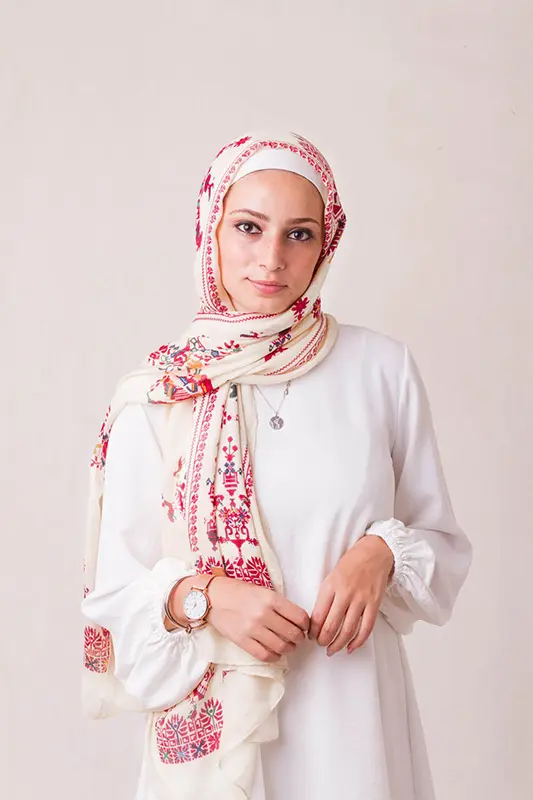
Here’s a hijab that can take any average outfit and make it iconic!
The Persian-inspired patterns, the bright colors against a white background, the soft modal fabric—everything about this hijab screams iconic. It’s no wonder that it’s a global best seller of EMMA’s.
Turath in Modal
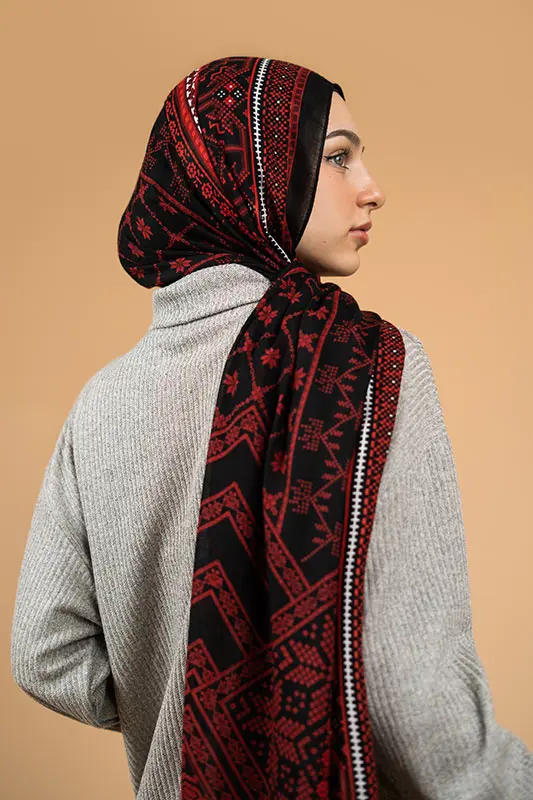
Do you want a hijab that speaks volumes of Arabic culture? Turath is an Arabic-inspired hijab with Egyptian and Palestinian influences in its pattern. It only features three colors to keep the focus on its eye-catching patterns, and it comes in EMMA’s signature modal fabric.
Siwa
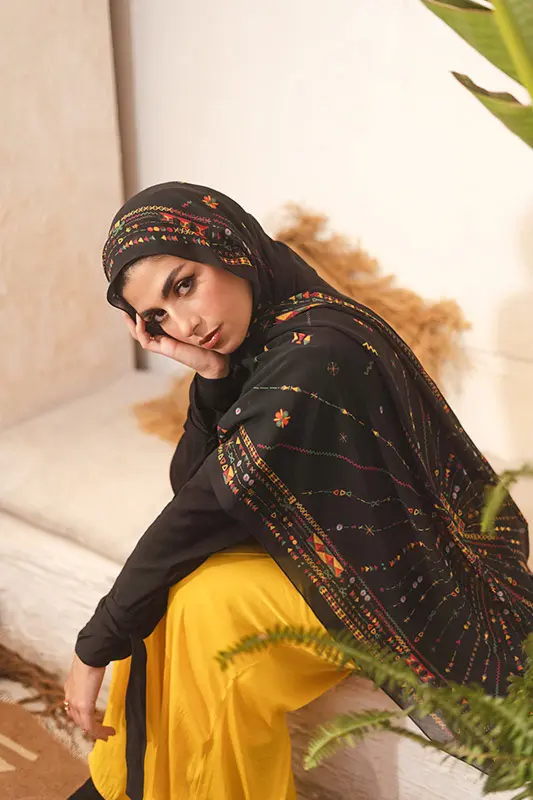
Inspired by Egyptian deserts and the oasis of Siwa, this hijab is a unique piece to have in your wardrobe. Though its color is predominantly black, it has accents of red, green, red, and orange. You can wear it with any of these warm colors, and it’ll make your outfit pop like no other.
To Wrap Up
The Quran addressed hijab in two different instances, as we illustrated above. Despite that, it wasn’t referred to as a ‘hijab’ at either time. In fact, this word was used in reference to separators and curtains, not to headcovers.
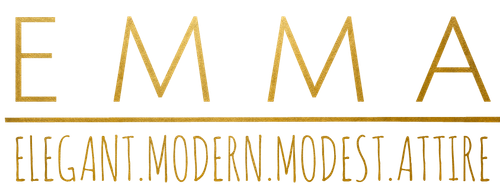
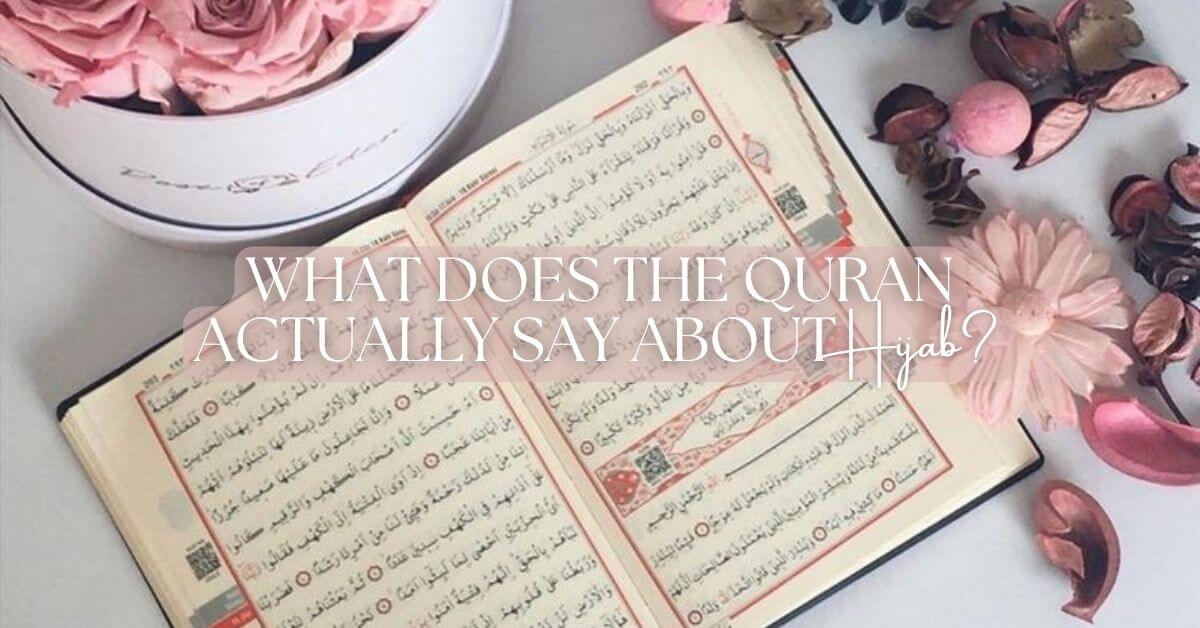
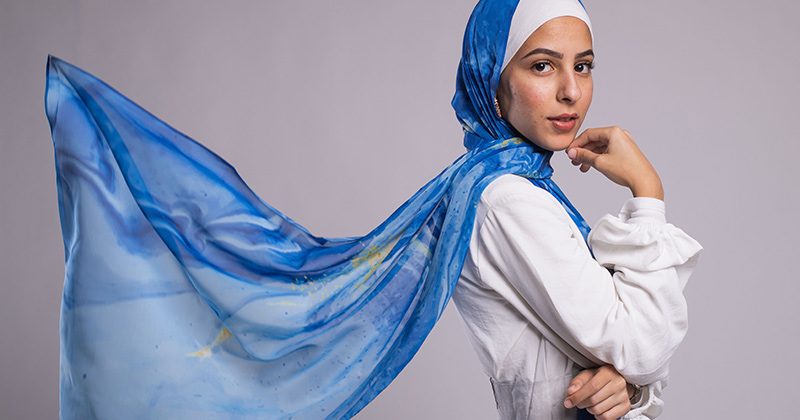
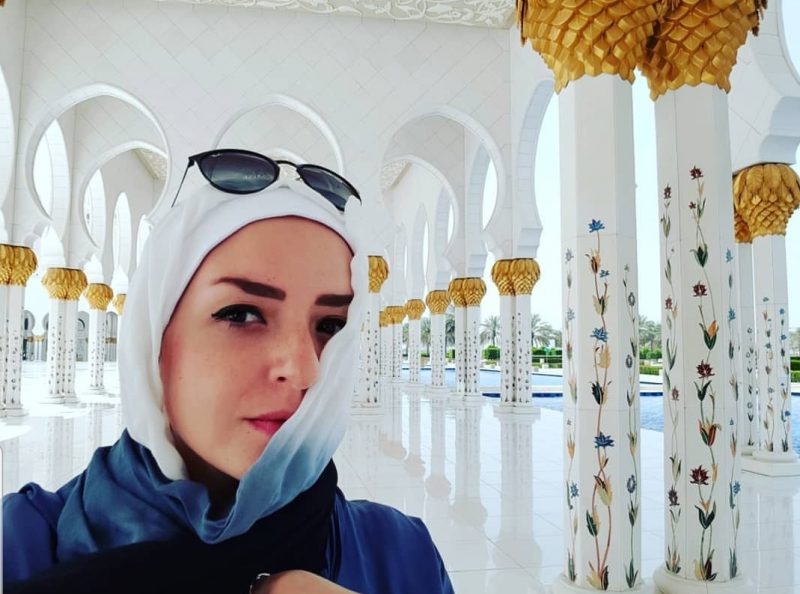

Alhamdulilah robil alamin I have gained new things: meaning,how to wear, reasons for wearing Hijab..
i learnt some things about hijab in islam, but i have a question that is it must to wear a hijab or do you have a choice?
Everything in Islam is a choice.